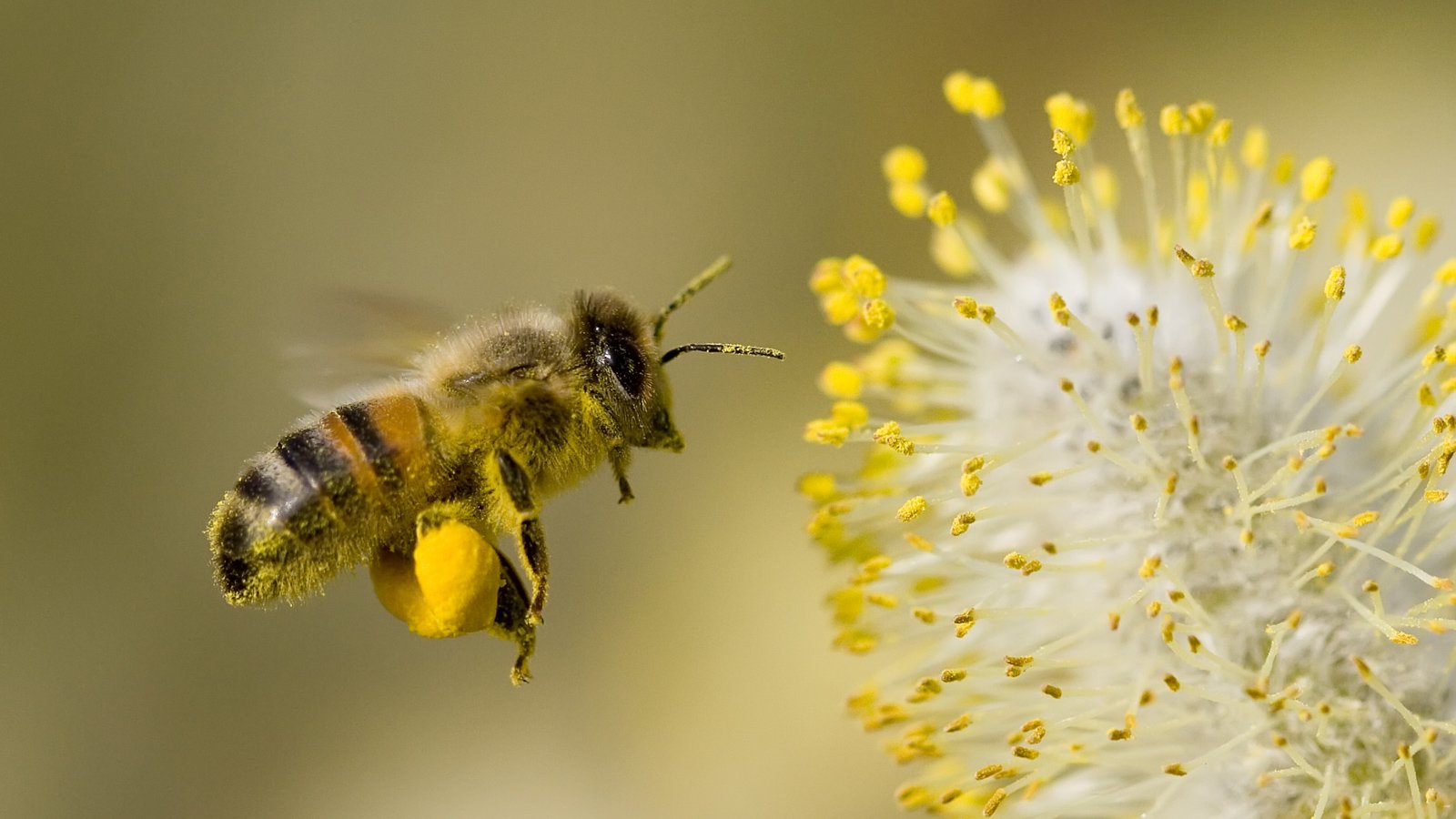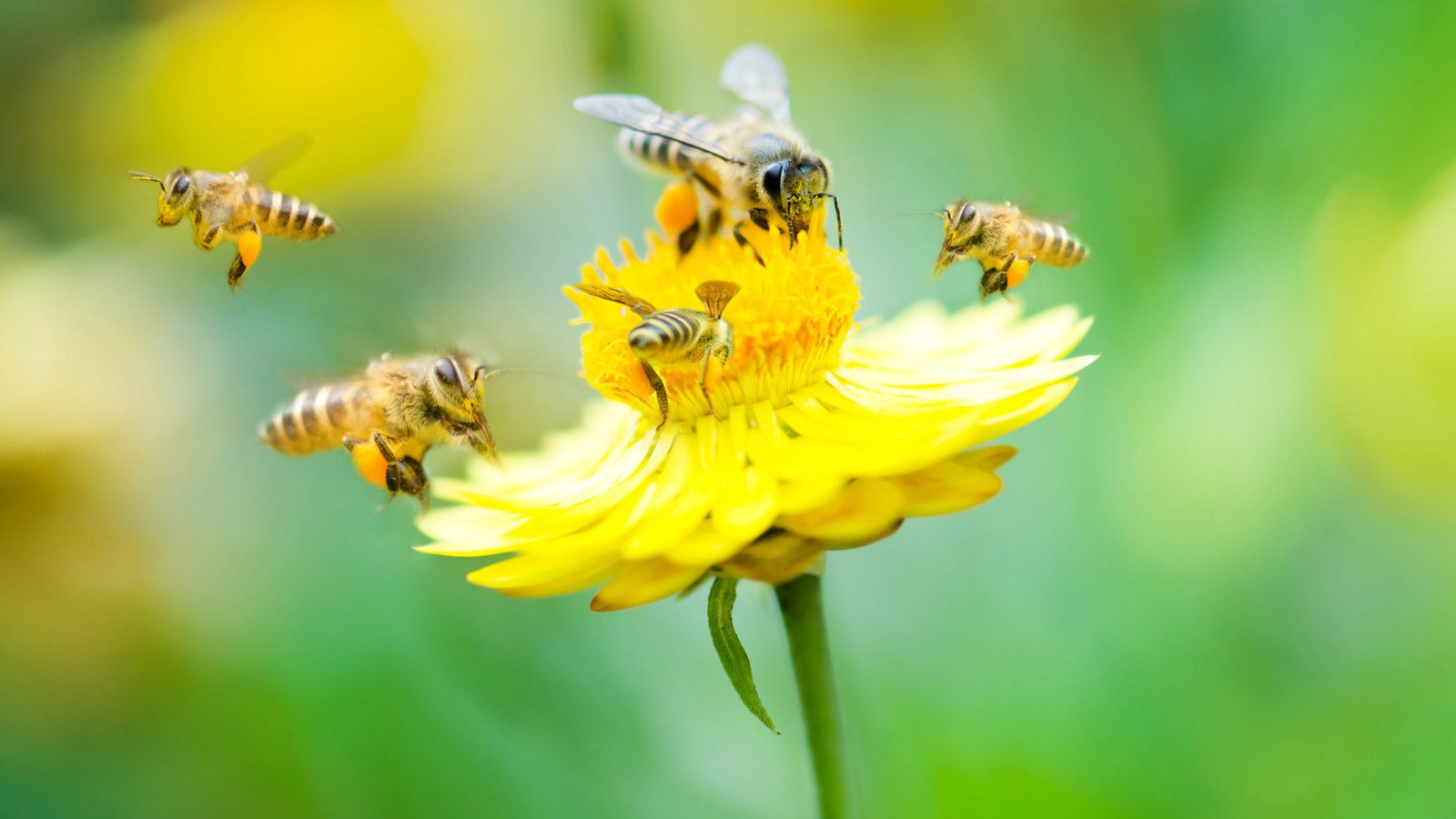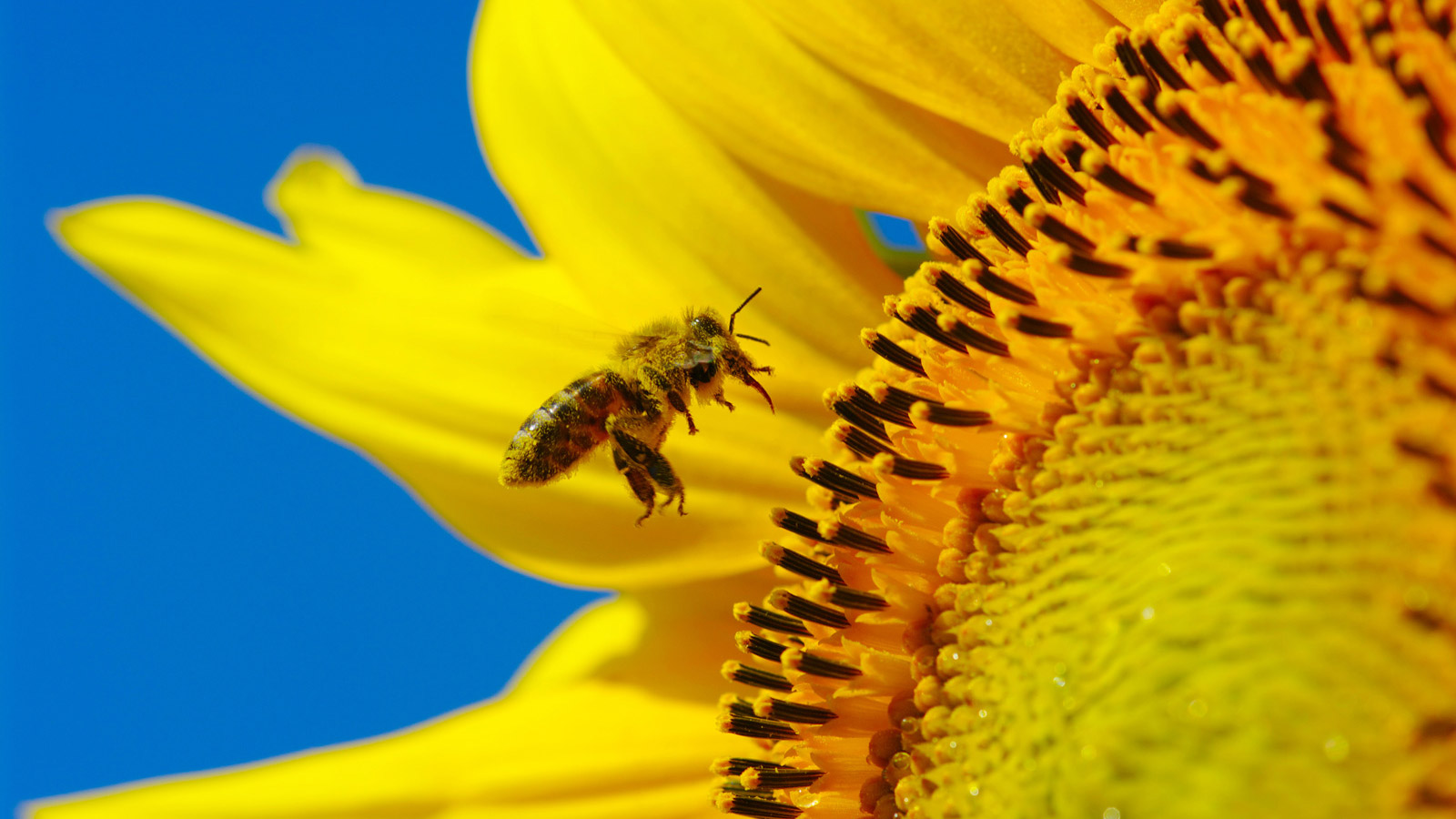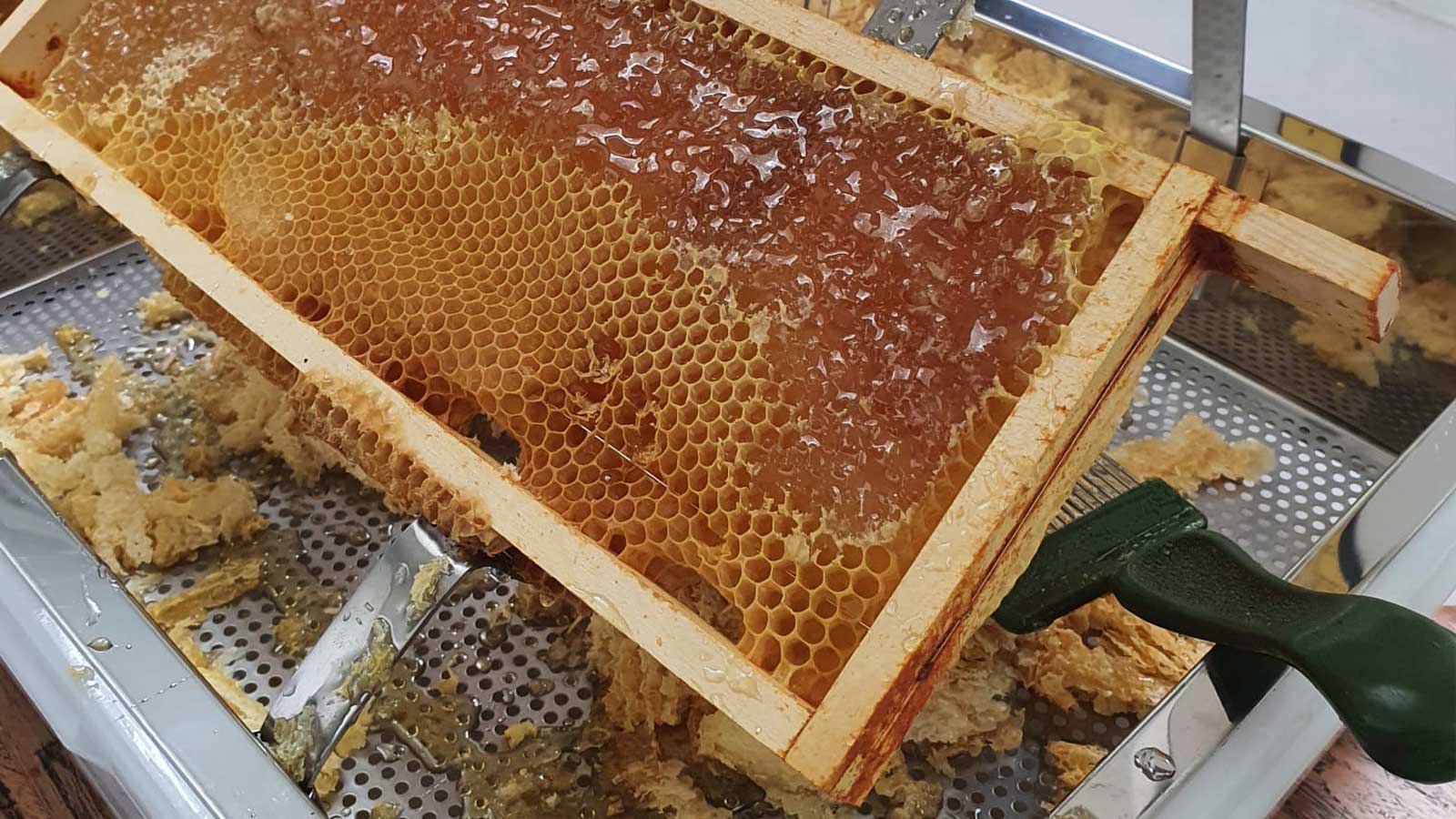Milgro celebrates International Honey Bee Day every third Saturday in August. An important day, because the honeybee is indispensable in our food chain. Unfortunately, bees have been struggling for years in the Netherlands. In this blog you can read why it is necessary for us to monitor the survival of the honeybee. Will you help?
Why are honey bees struggling?
Honey bees are struggling in the Netherlands. There are a number of reasons for this, including pesticides, climate change and urban construction. The latter two cause fewer and fewer flowering plants and reduced biodiversity. As a result, bees do not find enough food to survive.
Some seeds are treated with chemical pesticides. The poison spreads throughout the plant, including the nectar and pollen. Bees are defenseless against this crop protection.
Fewer honey bees means less natural pollination. Pollination occurs because the bee moves from flower to flower while searching for nectar. In doing so, they ensure that flowers and plants are fertilized. This may sound like a small task, but it has huge consequences.
As humans, we depend on insect pollination for 75% of our crops. Although several insects can pollinate, the honey bee contributes by far the most to this. So fewer bees to pollinate has serious implications for our food chain.
Read also

Pollination by bees

How can you help the honey bee?
You can optimize the natural environment of honey bees by installing an insect hotel. Here the honey bee finds shelter from weather conditions and natural enemies. They prefer to choose hollow trees, a hive or beehive for this purpose.
An insect hotel is designed to make the bee feel at home. They are for sale at hardware stores and garden centers, but are also easy to make yourself. For example, use twigs, stones and dried grass.
Flowering all year round
Honey bees find nectar and pollen in flowering plants. Therefore, it is advisable to put flowers and plants in the garden that alternate in flowering period. In this way, the bee will find plenty of food throughout the year. Bee-friendly flowers and plants include sunflowers, spurrey, phacelia, cornflowers, crocuses, snowdrops, hyacinths and ivy.
Read also

Why flower bulbs are essential for bees
Bee facts
The body of the honey bee is miraculous. Did you know that a bee has a so-called pollen basket in which it stores pollen? This hive is located on the outside of its leg. Thanks to the bee's honey saliva, the pollen becomes sticky, keeping it well inside the hive.
Bees breathe through openings in the side of their abdomen. Through these openings, air containing fresh oxygen enters tubes called tracheae. These tubes distribute oxygen throughout the body.

Milgro and bees
Milgro is very aware that bees play a major role in our food chain. This is why we are celebrating honey bee day. Milgro and bees are inseparable. Thus, we sponsor our own hive and have included the animal in our logo.
Read also

The honey yield from the Milgro hive
Stay informed
Milgro regularly publishes articles and blogs on issues close to our hearts, such as the bee. You will also read regular updates on the circular economy, natural capital and sustainable waste and resource management. Want to stay informed? Follow us on LinkedIn or Instagram.








